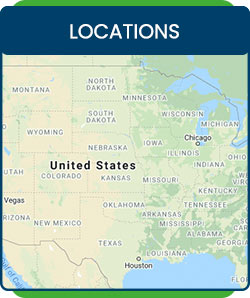How Does a Person Get Narcolepsy?
For information on the signs of narcolepsy, call our dedicated sleep team today at Koala® Center For Sleep & TMJ Disorders or visit us online to book an appointment. We have convenient locations across the U.S. in Bloomington IL, Peoria/Dunlap IL, El Paso TX and Wausau WI.


Table of Content:
What are the five signs of narcolepsy?
How does a person get narcolepsy?
What can narcolepsy be mistaken for?
How do you stop narcolepsy?
The five signs of narcolepsy can be remembered with the acronym CHESS: C for cataplexy, H for hallucinations, E for excessive daytime sleepiness, S for sleep paralysis, and again, S for sleep disruption. The presence of cataplexy determines if a patient experiences narcolepsy type one (with) or narcolepsy type two (without); narcolepsy with cataplexy (type one) is most common.
Cataplexy is recognized as the symptom in which narcoleptic patients appear to be passing out or falling asleep at random. This perception is incorrect, as patients are fully conscious during these episodes and are not at all falling asleep. Instead, episodes are characterized by muscle weakness and sudden loss of muscular control, possibly resulting in the accidental passing of urine, feces, or vomit. Further, these episodes are often triggered by strong emotions but can happen for seemingly no reason. These attacks last seconds to a couple of minutes, during which patients are aware of their surroundings and can hear what is going on, though they are unable to speak or move. Hallucinations are another sign of narcolepsy and may be hypnagogic or hypnopompic.
Hypnagogic hallucinations occur while falling asleep, whereas hypnopompic hallucinations occur upon waking. Excessive daytime sleepiness is a symptom seen in one hundred percent of narcoleptic patients. You will feel tired throughout the day due to constant sleep disruptions and improper regulation of neurochemicals that control sleepiness. This may result in frequent, accidental, or prolonged napping.
Sleep paralysis is another symptom of narcolepsy, though it is seen in less than half of patients. When in REM sleep, the deepest state in which dreams occur, your body is entirely relaxed. If you have a sudden awakening from REM sleep, your muscular activity may be delayed and cause you to be immobilized momentarily or paralyzed. Hypnopompic hallucinations may accompany sleep paralysis and make the experience particularly frightening to the patient.
Finally, sleep disruption is a significant factor in narcolepsy. Patients with the condition fall into REM sleep much faster than those without narcolepsy, and the transition between 4 sleep stages occurring every 100 minutes or so is disrupted. Further, narcoleptic patients will likely wake up multiple times throughout the night.
The cause of narcolepsy is unknown, though the root is believed to be hormonal. The body produces many hormones, or chemicals, to direct various biological functions, including sleep. For example, the hypothalamus, a gland in the midbrain, has many functions, including the production of hypocretin (also known as orexin), a hormone that regulates wakefulness. It is theorized that narcolepsy is caused by an autoimmune response, meaning the body’s immune system recognizes a biological material as foreign and tries to attack and destroy it.
In this case, doctors believe the body is attacking the hypothalamus and other related structures, resulting in a hypocretin deficiency. Evidence has shown a genetic factor in narcolepsy, and those with a family history of the condition are much more likely to develop it. Like other sleep disorders, patients with psychiatric or neurological disorders are also at an increased risk of narcolepsy.
Infections, especially in the brain, have also been a recorded trigger of narcoleptic symptoms. In the case of secondary narcolepsy, that is narcolepsy caused by an underlying health issue, brain tumors, traumatic head injuries, degenerative disorders like multiple sclerosis (MS), and encephalitis (inflammation of the brain) may be the cause. Unexpectedly, there was also a brief increase in cases of narcolepsy after the Pandemrix influenza vaccine was released in Europe in 2009.
Narcolepsy may be easy to misdiagnose, especially narcolepsy type two, in which cataplexy does not occur. Excessive daytime sleepiness may be misdiagnosed as chronic fatigue disorder or other sleep disorders, like insomnia.
Peers of patients may believe their drowsy behavior and irregular sleep pattern to be related to mental health conditions, like depression or anxiety. Cataplexy episodes specifically may be mistaken for epilepsy or similar seizure disorders. To strangers, symptoms of narcolepsy, including loss of muscle control, may appear similar to drunkenness or intoxication.
Since the cause of narcolepsy is not known or well understood, treatments cannot be made to target the specific issue. Instead, treatment for narcolepsy focuses on improving the patient’s quality of life (QOL) by alleviating the symptoms.
As with any condition, lifestyle changes are usually the first recommendation to start recovery. The use of intoxicating substances such as alcohol or recreational drugs should be reduced as well as caffeine intake and cigarette smoking. These substances can heavily influence sleep patterns and often cause many disturbances. Mild narcolepsy can be regulated well with adherence to a sleeping schedule and frequent naps.
Patients may find napping to be a difficult change initially, as they may sleep for longer than intended. Still, consistency will eventually help regulate daytime drowsiness and decrease nighttime awakenings. Regular exercise should also be implemented to help gain control of energy use and conservation. Various medications may be prescribed to narcolepsy patients to help with several symptoms, including stimulants, antidepressants, central nervous system depressants, histamine three blockers, or wakefulness-promoting agents.
If you are dealing with narcolepsy or believe you may have the condition, please reach out to Koala® Center For Sleep & TMJ Disorders. Our sleep team can provide information on various sleep-related conditions. Appointments to meet with our highly skilled team can be made by phone or online.

Additional Services You May Need
▸ KoalaKIDZzz®
▸ Sleep Apnea
▸ Snoring
▸ TMJ Disorder
▸ Fatigue
▸ Sleep Disorders
▸ Weight Loss
▸ CPAP Alternative
▸ Oral Appliances




